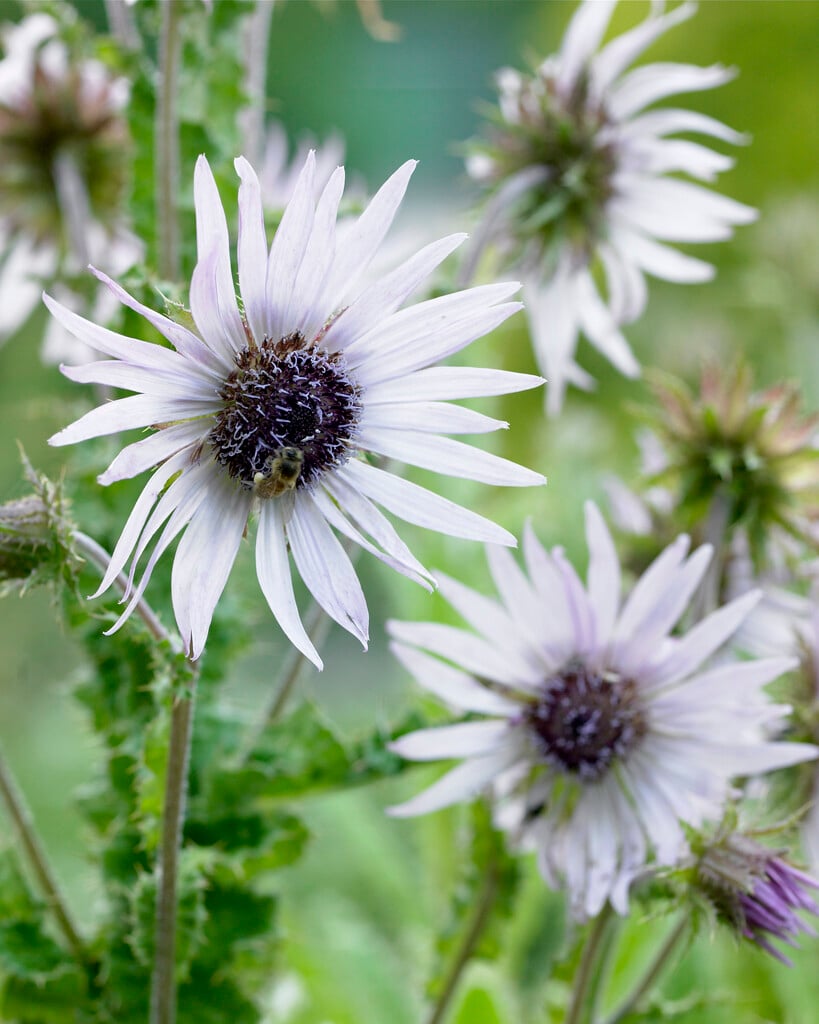Berkheya purpurea
purple berkheya
A perennial, growing to 75cm tall, with rosettes of spiny leaves, each leaf up to 45cm long and 10cm wide, with a downy-white underside. In summer, flowerheads, up to 8cm in diameter, are carried on short side branches off a flower stem and open in succession from the top down. The daisy-like flowers comprise an outer ring of white, pale mauve or purple ray florets surrounding a darker purple centre
Size
Ultimate height
0.5–1 metresTime to ultimate height
2–5 yearsUltimate spread
0.1–0.5 metresGrowing conditions
Moisture
Well–drainedpH
Acid, Alkaline, NeutralColour & scent
| Stem | Flower | Foliage | Fruit | |
| Spring | Green | |||
|---|---|---|---|---|
| Summer | Purple White | Green | ||
| Autumn | Green | |||
| Winter |
Position
- Full sun
Aspect
South–facing or West–facing
Exposure
Sheltered Hardiness
H4Botanical details
- Family
- Asteraceae
- Native to GB / Ireland
- No
- Foliage
- Deciduous
- Habit
- Bushy
- Genus
Berkheya can be shrubs, or perennials, with spiny, pinnately divided leaves and yellow, purple or or white daisy-like flower-heads in summer
- Name status
Correct
- Plant range
- S Africa
How to grow
Cultivation
Grow in a well-drained, fertile soil in full sun. Protect from wet winter conditions
Propagation
Propagate by seed or by division
Suggested planting locations and garden types
- Coastal
- Gravel garden
- Cottage and informal garden
- Flower borders and beds
- Wall side borders
- Cut flowers
Pruning
No pruning required
Pests
Generally pest-free
Diseases
Generally disease-free
Love gardening
Sign up to receive regular gardening tips, inspiration, offers and more
View our Privacy Policy
Get involved
The Royal Horticultural Society is the UK’s leading gardening charity. We aim to enrich everyone’s life through plants, and make the UK a greener and more beautiful place.
